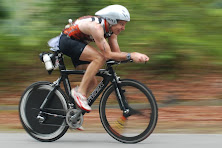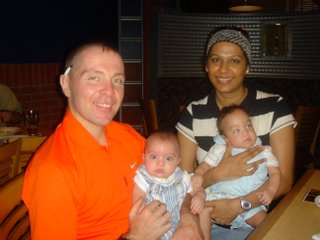Last week I talked about the different improvement curves that I’ve observed for different types of athletes. I identified three basic athlete types: the natural, the realist and the worker.
As part of our new “How to Qualify for Kona” section that recently kicked off, I’m going to put some of those observations into the context of what it means to different types of athletes looking to qualify for Kona.
In a previous article for the Training Peaks site I conveyed some of the typical chronic training load ranges that I tend to see for athletes of different types and ability levels. The table from that article is reproduced below.

The times that qualify an athlete for Kona are getting faster by the year. The 2010 ranges for flat (Florida, Arizona, Brazil) and hilly courses (Lake Placid, CdA, St. George) for differing age-groups and genders is shown below.

So, comparing the two tables, if you’re a young(ish) male, you’ll likely need the fitness level represented by a VO2max/VO2 score of 60-67ml/kg/min* corresponding to a Chronic Training Load somewhere in the 75-150 TSS/d range. If you’re a young(ish) female, you’ll need the fitness level represented by a VO2max/score of 57-60 ml/kg/min* corresponding to a CTL somewhere in the 70-130 range.
*I am using VO2max here as a general indicator of fitness here, but in reality the components of ironman fitness necessary to qualify are more complex and multi-faceted. I elaborate on some of these factors here.
As I conceded in the training load piece, these are some pretty big ranges! In hours per week terms, we could be talking about an average training week as low as 10 hours or as high as 25 hours per week! This is where last week’s article on different athlete types comes in. There will be a fortunate 15% who can sign up for one of those “Get to Kona on 10 hours a week” plans and actually get to Kona on 10 hours a week! If you’re one of those athletes, you can close your browser; this piece isn’t for you. But for the vast majority of us, Kona level fitness is going to be take more – a lot more! If we convert these CTL numbers to hours: a chronic load of 18-20 hours week of easy-steady training for five or more months prior to the event.
Think about this, two-and-a-half to three hours a day of training, eight to 10 hours of work/commute, eight to 10 hours of (necessary) sleep, eating, bathing, etc., is going to lead to five or more months of very structured living and not doing much else. It is no coincidence that those who qualify typically have atypical work or family situations. Kona qualifiers have different fitness levels to the rest of us generally because they have different lives to the rest of us.
According to VO2max data from the Cooper institute, Kona qualifiers are in the top 0.5%-.0025% of the population when it comes to fitness. In other words, if you’re a young (college age guy) and we randomly sampled 200 folks from your dorm, you would consistently be the fittest. Taking this a little further, if you’re a 40-something guy living in a pretty good-sized town of 40,000 people, you’re the fittest guy in town! This kind of stat doesn’t happen without living a little differently to those 39,999 folks who have more “normal” fitness.
Faced with such stats, it is tempting to pull the genetics card, but based on what I’ve seen, genetics isn’t the limiter, at least when it comes to getting to Kona level fitness. The vast majority of folks respond to training load quite similarly and most of us have the potential to reach a very high level of fitness. As I suggested in the previous article on athletic types, for 70% of folks, if they do the work, Kona is within reach but setting up your life to do the work is another matter and for many it is far easier to attribute the limiter to genetics than to make the required change.
Merely setting up your life to have the space to fit in five months’ worth of 18 to 20 hour weeks of training in your Kona build isn’t enough. The realist knows that even with the life space to fit the training and sufficient attention given to recovery, you can’t just get up off the couch and throw down one 18 to 20 hour training week after another. You also need a fitness “base” to pull this off. So you’ll want to factor in a period of preparatory “training to train” weeks, progressively building up the fitness to tolerate the back to back big weeks that will comprise your Kona build.
Based on my experience, most folks coming in from normal active fitness levels are going to need to both be generally fresh and healthy (that is, come into the hard training unloaded), and have a base fitness of five to six months of preparatory training in the 12 to 15 hour range to tolerate those 18 to 20 hour weeks of your “get to Kona” push. If you’re coming from below normal fitness (less than 45 VO2) you’ll probably need another five to six months of preparatory “get in shape” work before even beginning the “train to train” period.
Additionally, we both know that your chances of putting together 20 or more back to back weeks in the 18 to 20 hour range without recovery isn’t good. You’re going to get tired and need some recovery weeks sprinkled in to your Kona build. In fact, if you manage a ratio of 3:1 loading to recovery weeks in the context of a 9-5 job and family life without getting sick or injured you’ll be doing very well! So that five months of specific training, more realistically becomes six or seven months.
Adding it all up, the realist should be planning for:
- Six to 12 months of uninterrupted, consistent “basic training” to get ready to train for the event.
- Six to seven months of focused “specific training” directed specifically towards your (first) Kona push.
- You start a new job/your work commitments increase beyond the 9-5.
- You start a relationship/end a relationship/have relationship issues
- Your family commitments increase
- You get sick/a family member gets sick.
- You get injured.
- You move
- You go on vacation
- You race too frequently (and have too much time for each devoted to taper and recovery)
- You/your significant other plans a home improvement project!
That said, the realist is also going to be inherently aware of the consequences of inconsistency and is going to control the controllable and whatever they can to avoid the above and put together at least a couple of relatively uninterrupted seasons where their training load is limited by their level of fitness not by life circumstance. Gordo wrote about some of the proactive ways to enhance life stability in the intro article to the "How to Qualify" section.
Also, the realist is going to realize that there are no guarantees. While a VO2max of 60-67, a threshold of 85% and metabolic fitness of 4-5kcal/fat/min are all likely going to be necessary to qualify, they are not in themselves sufficient. You need both the fitness and a good day on an appropriate course to pull it off. In other words, you may need to put together more than one of these builds before high fitness and a good day coincide!
In my way of thinking, it is the combination of these factors (physiological, life and race) necessary for ironman success that make up the beauty of ironman racing. We’ll go into some of these additional factors that maximize your chances of qualifying in coming articles.
Until then…
Simon says: -
An interesting read for us aspiring Kona qualifiers. Takes a lot doesn't it?




4 comments:
yes. Great post.
I know what it takes to get to Kona (from seeing people I know qualify).
I don't ever care to go. Too much time commitment... I do this for fun. I want to keep it that way haha.
Keep focused though, you have it in you, you just need everything to click on race day man!
This is an awesome article, from my experience near 100% true. When I read it, it was me, I put in exactly the mileage and duration they are talking about, it was erie. I have always felt I made it to kona because no many people were putting in the time I put in. The ONLY change I'd make to this article is the duration. I don't think it could be done for most of us in a 18 months from build to kona. I think it's more like 3 to 4 years. It was for me anyway (Maybe if I didn't drink as much beer or eat crap I could have shaved a year off it?). Up to Kona, I did near 4 years of constant training day in day out, rarely missing a session. I've ALWAYS said, if I could do it, anyone could do it, so long as they put in the hours. The defining of the lifestyle is spot on, it requires a specific lifestyle.
I think this year you have a great shot. I think that MAO will really be helpful. Most every guy I've put on the plan has qualified for Clearwater / Vegas and are now working to Kona. (aka Carlos / Davis).
There is no doubt you have it in you to be at Kona, heck a couple years ago you were robbed with such an awesome time and not getting in.
Good luck, hopefully it doesn't eat you up mentally again this year. It's just a matter of time, preparation and a little luck.
I'm so wanting you to qualify this year you have no idea. Then at least you'll stop whining and sulking about it. hahahaha.
B
Great job putting all that together!
However, what I take from this is blah blah blah excuses excuses excuses. :)
I love that this is a REALISTIC view on what needs to be done. It's a wake up call for those dreamers out there that pretend like they will qualify for Kona one day (Me being one of them).
But I could have wrote this article myself, albeit a bit shorter:
You can't fake an Ironman.
You only get out of life, what you put into it.
And don't forget that added dash of 'the stars must align perfectly' on race day to have a chance to qualify, but this ONLY matters if you HONESTLY put in the necessary pre-requisite training.
I'm looking forward to more installments of your Realistic Kona qualifying experience. Don't get me wrong, this stuff is invaluable!! Lovin' it!
M, we shall see, we shall see. Never say never.
B, Amen to that brother, I'm still going at it and it's been 10 years.
J, yup those stars have to align, in even when they align it also then depends on who else turns up too.
Y, thanks, just give up sleep. Haha
Post a Comment